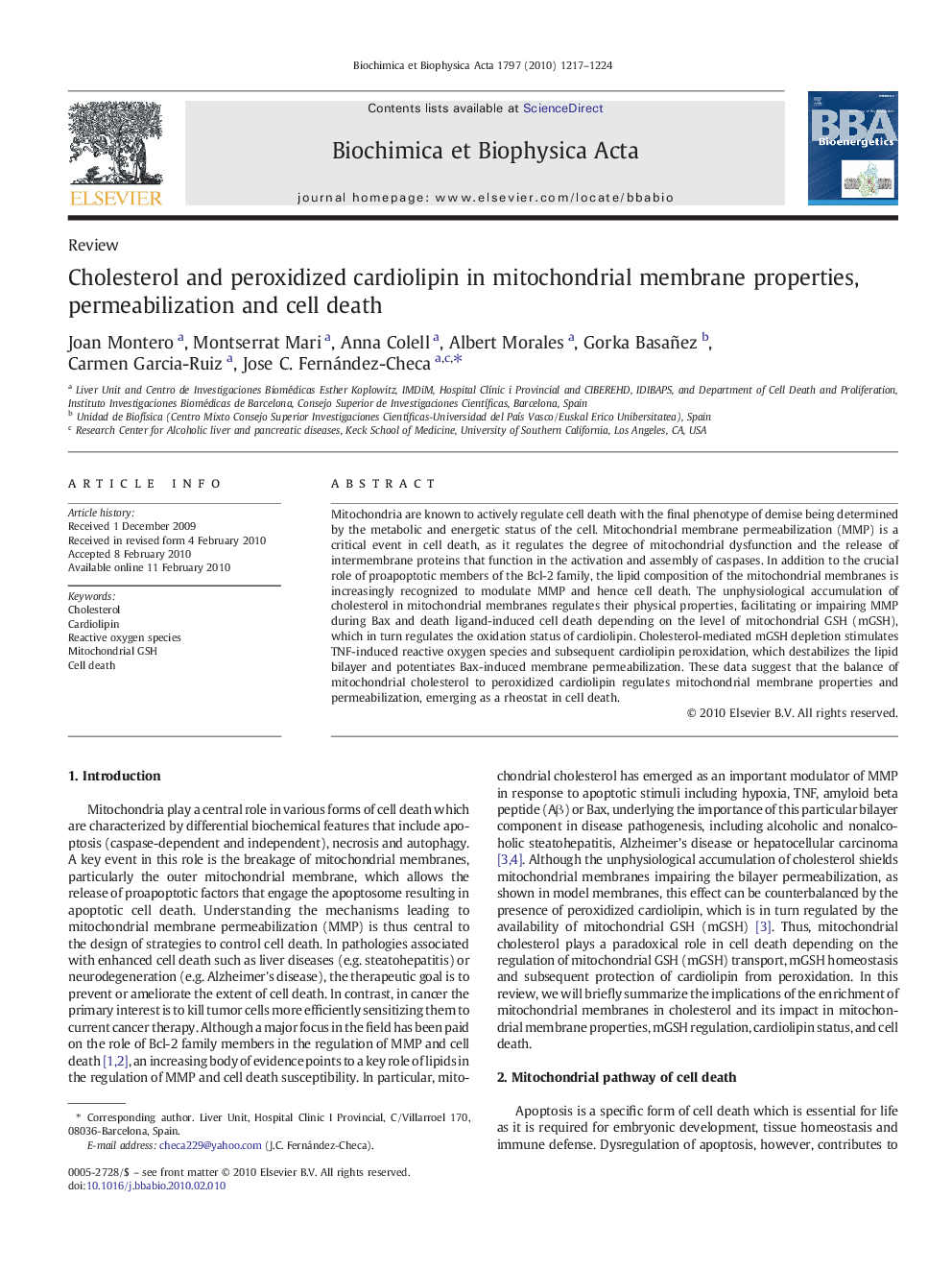| Article ID | Journal | Published Year | Pages | File Type |
|---|---|---|---|---|
| 8299008 | Biochimica et Biophysica Acta (BBA) - Bioenergetics | 2010 | 8 Pages |
Abstract
Mitochondria are known to actively regulate cell death with the final phenotype of demise being determined by the metabolic and energetic status of the cell. Mitochondrial membrane permeabilization (MMP) is a critical event in cell death, as it regulates the degree of mitochondrial dysfunction and the release of intermembrane proteins that function in the activation and assembly of caspases. In addition to the crucial role of proapoptotic members of the Bcl-2 family, the lipid composition of the mitochondrial membranes is increasingly recognized to modulate MMP and hence cell death. The unphysiological accumulation of cholesterol in mitochondrial membranes regulates their physical properties, facilitating or impairing MMP during Bax and death ligand-induced cell death depending on the level of mitochondrial GSH (mGSH), which in turn regulates the oxidation status of cardiolipin. Cholesterol-mediated mGSH depletion stimulates TNF-induced reactive oxygen species and subsequent cardiolipin peroxidation, which destabilizes the lipid bilayer and potentiates Bax-induced membrane permeabilization. These data suggest that the balance of mitochondrial cholesterol to peroxidized cardiolipin regulates mitochondrial membrane properties and permeabilization, emerging as a rheostat in cell death.
Related Topics
Life Sciences
Agricultural and Biological Sciences
Plant Science
Authors
Joan Montero, Montserrat Mari, Anna Colell, Albert Morales, Gorka Basañez, Carmen Garcia-Ruiz, Jose C. Fernández-Checa,
